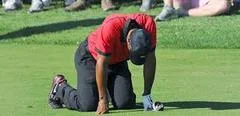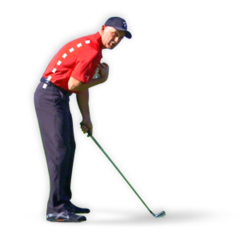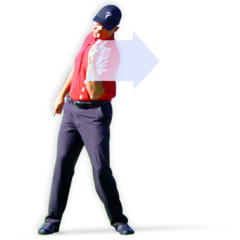Reducing Back Pain in Golfers
The purpose of this blog is to discuss possible mechanisms of injury and movement deficits related to lower back pain in Golfers. If you are experiencing pain we suggest you seek medical attention from a Physical Therapist or MD.
As a TPI certified provider I am trained to identify many different swing characteristics some of which are normal and some are dysfunctional. Understanding the body-swing connection is the foundation for which we are able to connect someone’s inability to move due to tightness or weakness and where to find those compensations during a golf swing. Not every golfer has the same swing characteristics and there is no one way to swing a golf club, but by taking a look at your setup and swing we can bring insight into the forces placed on your spine and your risk for lower back pain.
First it is important to look at your setup posture. Setting up in your mid iron stance we look for two different postures: S-Posture and C posture. We define S- Posture as having too much arch in the players lower back at set up. Even though there is no perfect posture, placing yourself in S-posture can create more stress on your lumbar spine by placing yourself in an excessive anterior tilt thus adding compressive forces to your spine. If your body is unprepared for these repetitive stresses in this posture, this could be related to pain you are experiencing. A slight adjustment to your pelvic alignment might key piece to having a pain free swing.
C posture is just the opposite, the pelvis is in a posterior tilt position and there is excessive rounding in your thoracic spine. This golf posture could be contributing to pain and cause a movement barrier in your swing. Ideally, we like to set up in a neutral posture to reduce excessive stress and strain on your lower back and set you up for accessing the most mobility possible for your swing. Now just because you want to setup like this, it may not be easily obtained, you may be limited by your anatomy, past experience/past prolonged posturing, as well as poor spinal proprioception.
Second we want to look at your swing from down the line and face on views. It is easy to set this up with the ability of our smartphones and the use of apps to slow down the swing. One of the most common swing characteristics we correlate with lower back pain is reverse spine angle. A Reverse Spine Angle is defined as any excessive upper body backward bend (trunk leaning towards the target) or excessive left lateral upper body bend (for a right-handed player) during the backswing. This swing fault makes it very difficult to start the downswing in the proper sequence, due to the lower body being placed in a position that usually limits its ability to initiate the downswing. When the lower body can't start the downswing or has a limited ability to initiate the movement, the upper body tends to dominate the swing which can create swing path problems and limited power output. Being in a Reverse spine angle posture puts excessive tension on the lower back due to a inhibition of the abdominal musculature during the backswing, and excessive compressive loads placed on the right side of the spine at impact.
As a Physical Therapist I subscribe to the ASSESS DON’T GUESS model. This means if you are a golfer and are currently experiencing lower back pain seeking medical treatment from a physical therapist is the way to go. As a part of getting you out of pain we assess your body and general movement patterns in addition to your swing and figure out what may be required to decrease improve your movement and decrease your pain. An individualized treatment plan for your specific limitations can be carried out in the form of mobility, stability and motor control exercises to improve your body’s ability to move through your golf swing.
Ever Golfer is unique from their swing to their anatomy. Exercise programs should be unique as well. Below are some exercises that can be performed to address these potential mobility, stability and motor control flaws that cause low back pain in your golf swing.
Corrective Exercise For S –Posture:
Posterior Pelvic tilts- Progress from laying on your back -> Quadruped -> Seated -> Standing. (Do 3 sets of 10 reps 3 times a day.)
Corrective Exercise for C-Posture:
Thoracic Extensions over a Foam Roller (seated -> laying on your back). (Do 3 sets of 30 reps 2 times a day)
Corrective Exercises for Reverse Spine Angle:
Hip internal rotation mobilization: 2 sets of 30 reps
Dead Bugs: 2 sets of 10 reps (Maintain neutral spine)
Bird Dog: 3 sets of 10 reps (Maintain neutral spine)
Half Kneeling Med Ball Lifts: 3 sets of 10 reps
Disassociation Planks: 2 sets of 10 reps
Take Away Messages:
There is no perfect Golf posture, even some pros set up in these postures. Pain is the indicator you might need to address it !
Looking at you’re set up posture is a simple way to make a small correction that may be needed to place your lumbar spine in a more advantageous position
A posture such as Reverse spine angle at the top of your backswing can wreak havoc on your golf swing and be related to your pain.
If you have lower back pain during your golf swing seek medical attention from a TPI certified Physical Therapist to get you out of pain
An individualized plan will be best to improve your bodies ability to move through your golf swing and produce power output!




